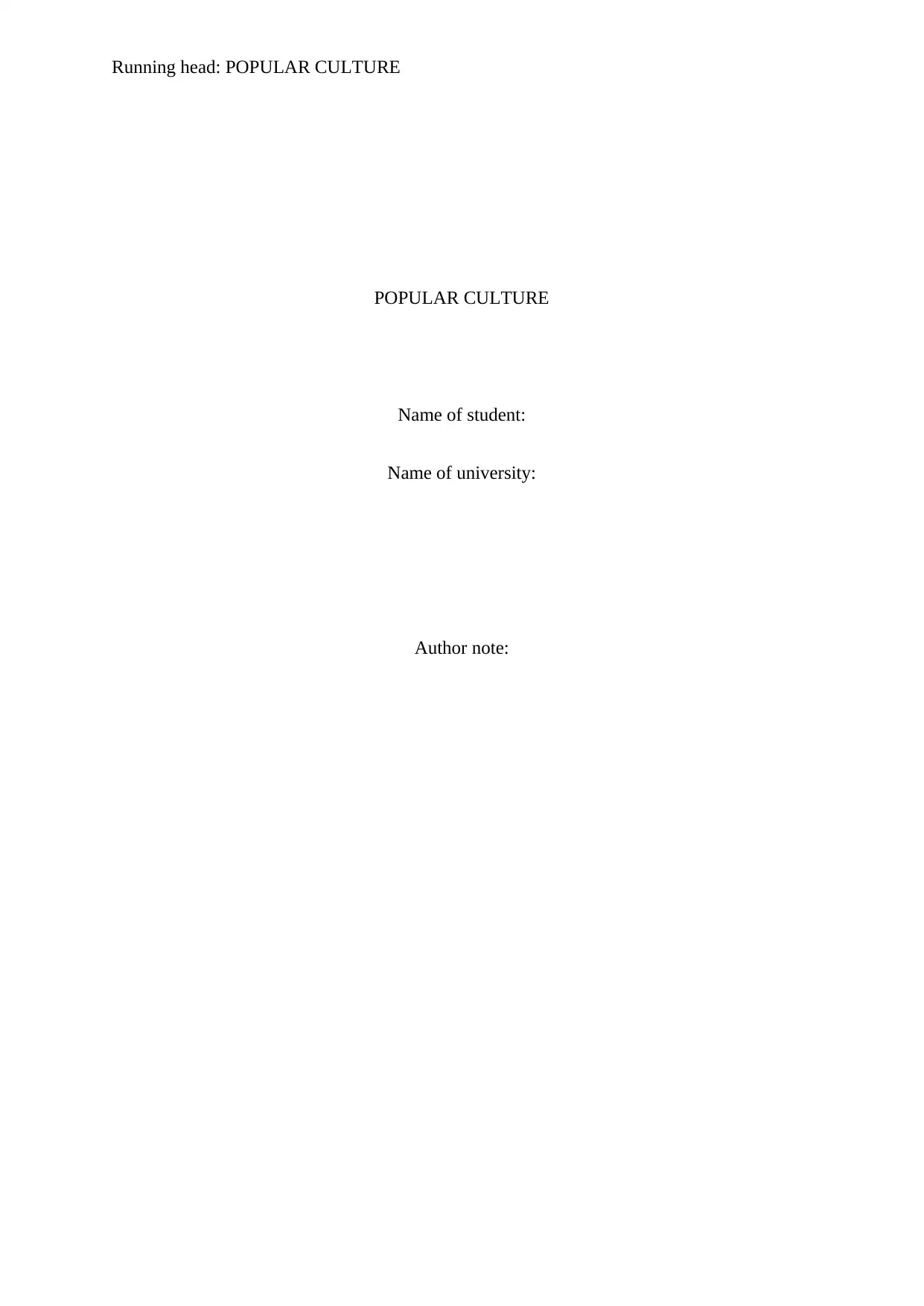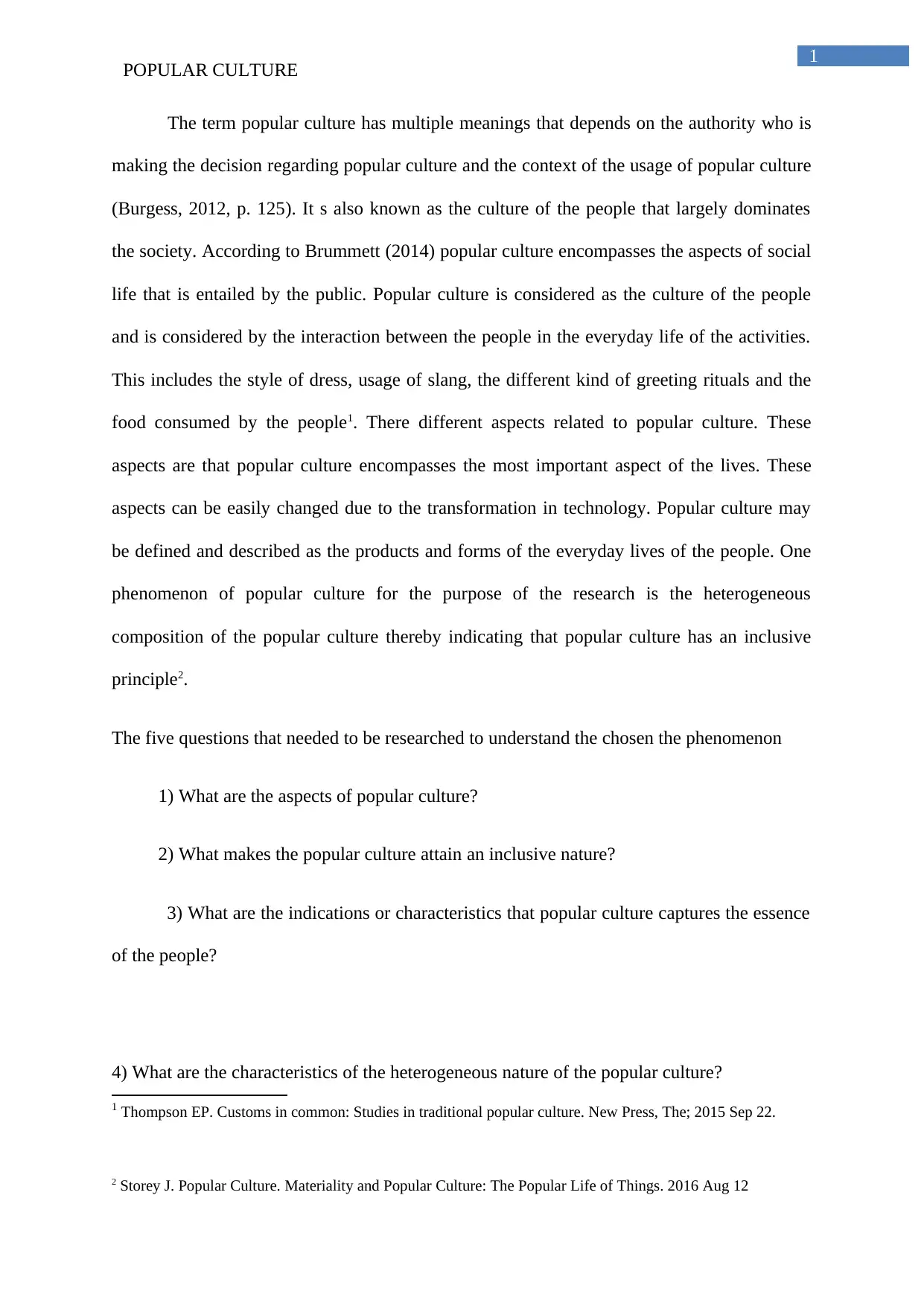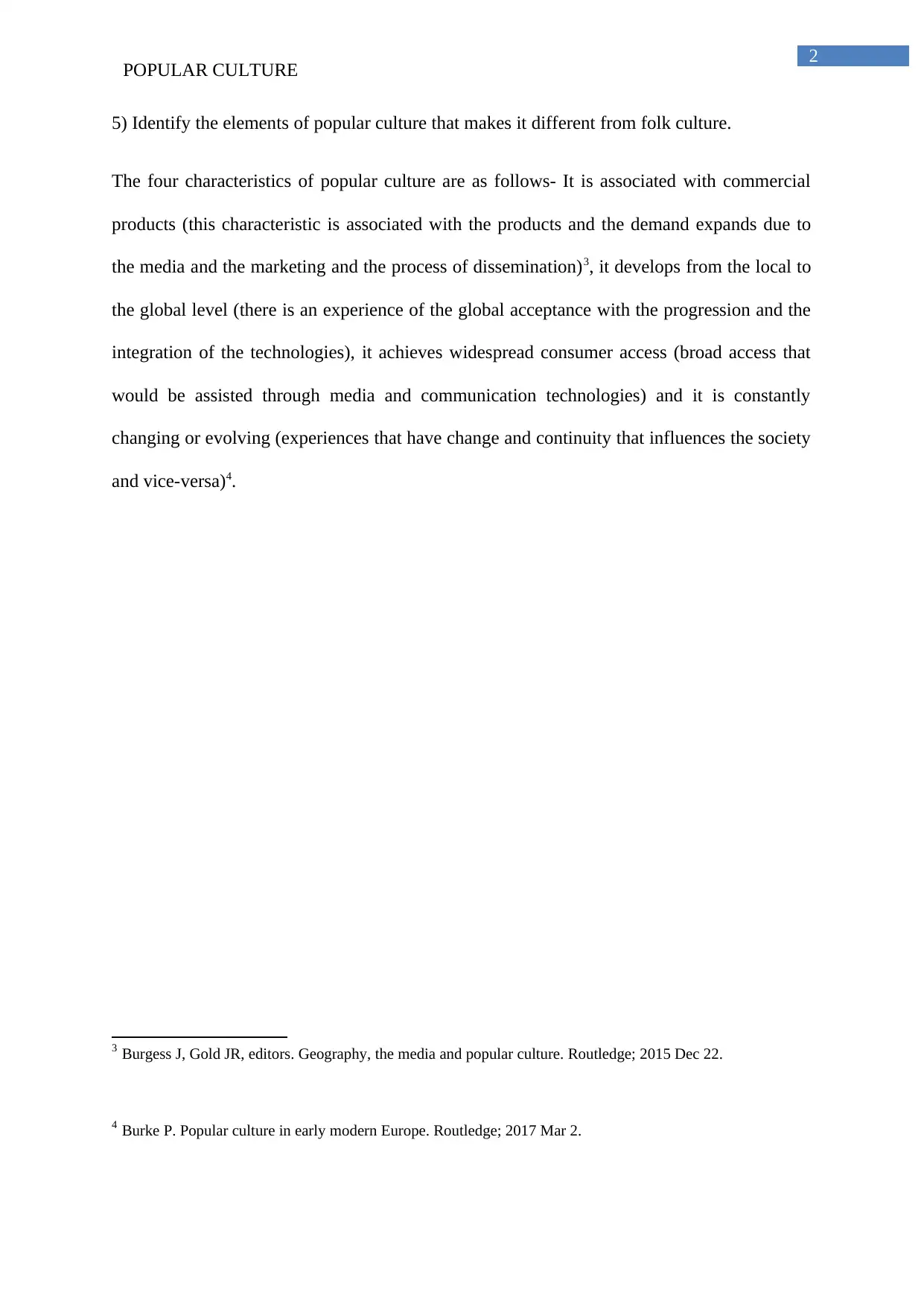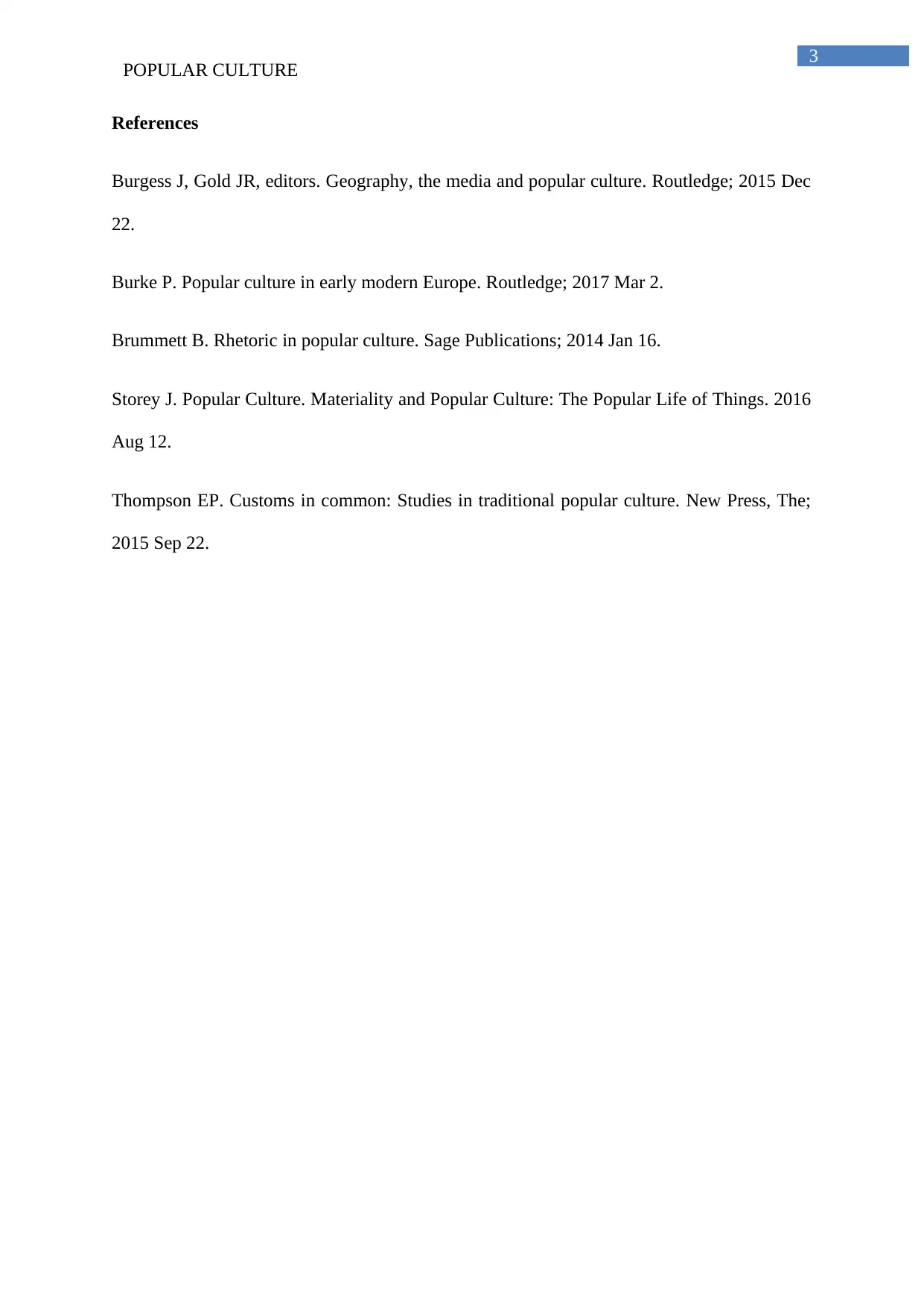Year 11 Assignment: Deconstructing a Popular Culture Phenomenon
VerifiedAdded on 2023/06/12
|4
|615
|109
Presentation
AI Summary
This presentation delves into the multifaceted nature of popular culture, defining it as the culture of the people, shaped by everyday interactions, evolving with technology, and characterized by inclusivity. It addresses key research questions to understand the phenomenon, such as identifying aspects of popular culture, its inclusive nature, its reflection of people's essence, characteristics of its heterogeneous nature, and its distinction from folk culture. The presentation highlights four key characteristics: association with commercial products, development from local to global levels, widespread consumer access, and constant change, all while emphasizing the influence of media, technology, and societal shifts. Desklib provides past papers and solved assignments for students seeking further insights into this topic.
1 out of 4





![[object Object]](/_next/static/media/star-bottom.7253800d.svg)